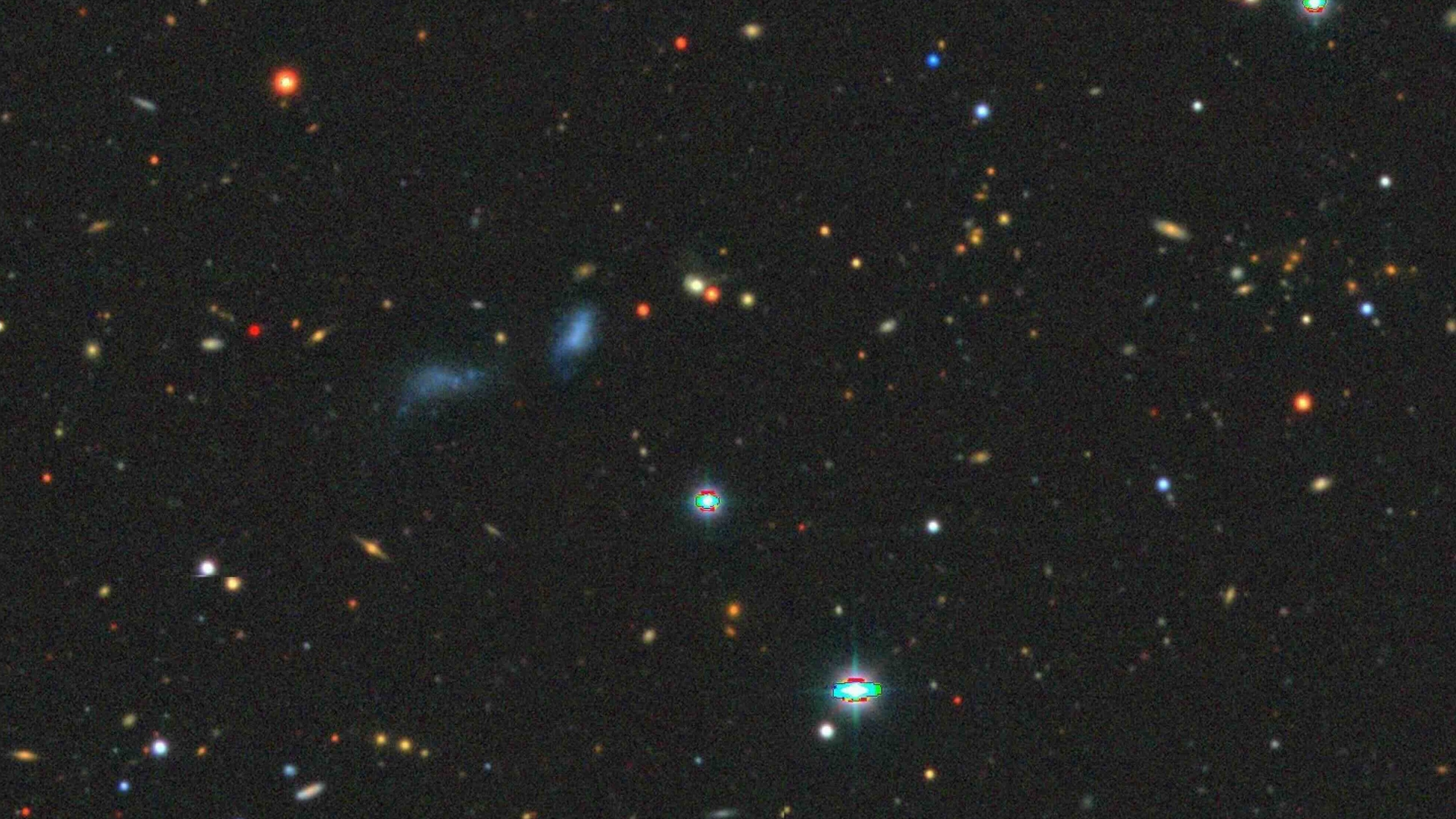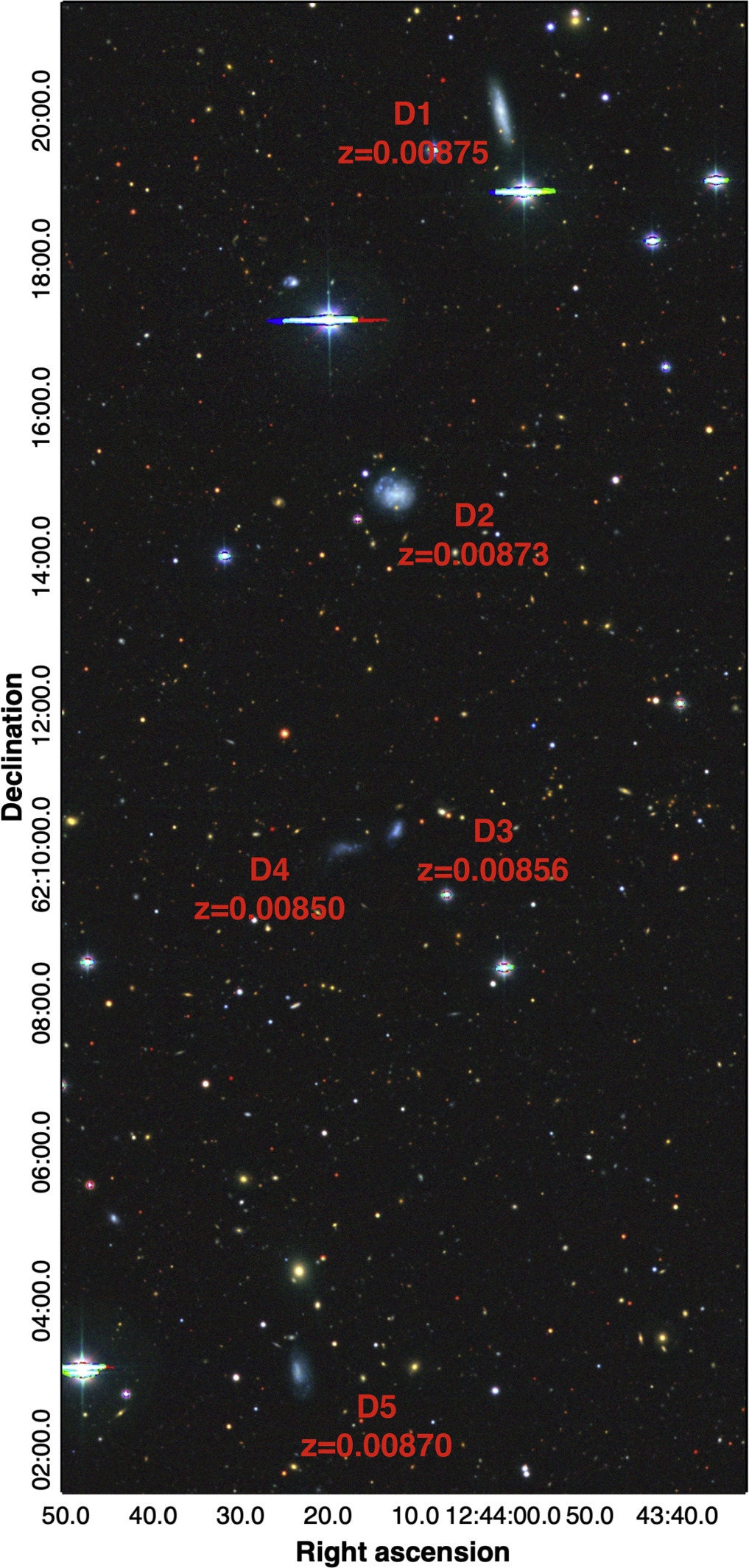5 galaxies in perfect alignment challenge our best model of the universe
"Why do they have the same rotation? They must have a connection with each other — that would be a very strong question that cannot be explained by the ΛCDM model."

Astronomers have discovered a group of dwarf galaxies that are unusually aligned in a near-straight line, with most of them rotating in the same direction.
These peculiar features challenge predictions made by the prevailing cold dark matter (CDM) theory, which suggests dark matter — the mysterious substance that provides the gravitational framework for galaxies and other large-scale structures — causes disordered groupings of galaxies. In other words, per this theory, galaxies aren't expected to have a preferred alignment. So, researchers think, the observed galaxies with oddly cohesive dynamics may be better explained by a different form of dark matter, called warm dark matter (WDM).
The newfound galaxy group consists of at least five members in an isolated pocket of the universe about 117 million light-years from Earth. Together, these galaxies span 502,408 light-years and appear to be aligned in an almost vertical line from north to south, a configuration "not frequently seen in CDM simulations," study lead author Sanjaya Paudel of Yonsei University in South Korea told Space.com.
Moreover, data from the Dark Energy Spectroscopic Instrument (DESI), which maps millions of galaxies in deep space to construct gigantic 3D maps of the universe, revealed that three of the five galaxies share the same direction of rotation — with their northern parts moving away from us and their southern parts moving toward us.
Related: Exotic 'Einstein ring' suggests that mysterious dark matter interacts with itself
The most plausible explanation for this coherent motion is that the galaxies formed from the same clump of gas — a scenario that contradicts the cold dark matter paradigm, which, as mentioned, typically predicts disordered groupings with no preferred alignment, especially for dwarf galaxies like those in this study."Why do they have the same rotation?" said Paudel. "They must have a connection with each other — that would be a very strong question that cannot be explained by the ΛCDM model."

Forthcoming observations could soon confirm whether the galaxies' rare, near-straight line distribution is a chance projection or a real physical arrangement, the researchers note in their paper. Chiefly, the distances to the individual galaxies are unknown, preventing the team from constructing a 3D picture of the galaxies' positions in space.
Breaking space news, the latest updates on rocket launches, skywatching events and more!
The scenario that currently offers a better explanation for these observed phenomena is that of warm dark matter, a hypothetical form of dark matter whose particles differ from cold dark matter when it comes to mass, speed, and, most importantly, how they clump together in the early universe.
WDM particles, such as sterile neutrinos, do not clump as efficiently as CDM particles, which would favor the formation of galaxies from the same cloud of gas. As a result, these galaxies would be more closely synchronized in both position and motion, leading to the coherent dynamics observed in this study, said Paudel.
While the WDM theory is increasingly being considered as an alternative to CDM, WDM candidates remain theoretical. This is because more pieces of evidence, like observations of galaxy formation and structures in the early universe, are needed to confirm or rule out the existence of WDM as part of the dark matter content of the universe.
The concept of cold dark matter and its role in structure formation in the universe is a cornerstone of the Standard Model of cosmology, "but if you find more and more evidence like this, it will probably be hard for ΛCDM to survive the next 10 to 20 years," said Paudel.
The paper was published on Nov. 19 in The Astrophysical Journal Letters.

Sharmila Kuthunur is an independent space journalist based in Bengaluru, India. Her work has also appeared in Scientific American, Science, Astronomy and Live Science, among other publications. She holds a master's degree in journalism from Northeastern University in Boston.
